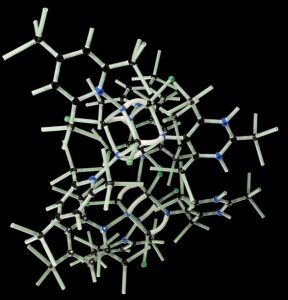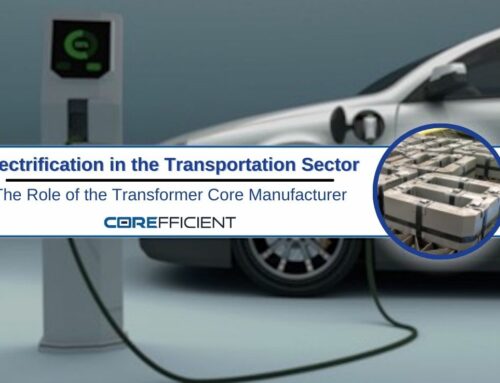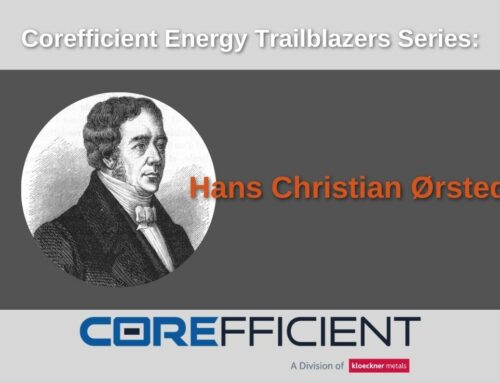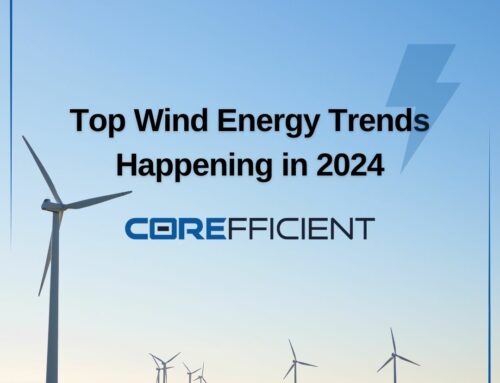Electricity is the lifeblood of the modern world. As our world expands and the needs of our society grow, so too grows the need to develop more efficient transformers, generators and motors. These technologies are critical to increasing the efficacy of our power grids and the sustainability of our planet. The first step toward making these ecological and technological advancements is the development of more efficient electrical steels.
Electrical steel is the essential component for electromagnetic machines. It is used to create magnetic cores that help power transformers, power generators, and more. It’s called by many names – lamination steel, silicon steel, transformer steel, and silicon electrical steel – but all of these terms share in their unique magnetic properties.
Electrical steel is usually manufactured in the form of cold-rolled strips, generally referred to as laminations. In the transformer core assembly process these thinly cut laminations are stacked together to form the core.
THE CHEMISTRY OF ELECTRICAL STEELS
Electrical steel is steel that has been alloyed with iron and silicon. Silicon is the most important alloyed element in electrical steel, as it provides the electrical resistance in the material. This resistance decreases in incoming eddy currents, which in turn leads to less core loss. Additionally, manganese and aluminum can be added to the material.
The purity of the material is paramount. Sulfur, oxides, nitrides, and carbides all decrease the magnetic permeability of the steel, and will also degrade the efficacy of the core over time. In order to reduce loss, transformer core manufacturers often use an annealing furnace to remove these harmful contaminants.
GRAIN ORIENTED AND NON-GRAIN ORIENTED STEEL
Grain Oriented Electrical Steel
Grain-oriented electrical steels (GOES) are alloyed with iron and silicon, and are developed to provide low core loss and high permeability.
During the development of GOES, the material is processed with optimal magnetic properties developed in direction that it is rolled in. The overall magnetic flux density of grain-oriented material is increased by 30% in the direction that it’s rolled in, but its magnetic saturation is reduced somewhat. GOES is most commonly used in high-efficiency transformers, generators, and motors.
Cold Rolled Grain-Oriented Steel is abbreviated as CRGO.
Non-Grain Oriented Steel
Non-grain-oriented steel is electrical steel that is NOT cold rolled in a specific direction to control its crystal orientation. It usually has a silicon level of 2 to 3.5%, and magnetic properties that are consistent in all directions. Its benefit lies in the fact that it’s far cheaper to produce, and is most applicable when lowering costs is more important than increasing efficiency, which is often the case in motors and other appliances without a magnetic flux.
Cold rolled, non-grain-oriented steel is abbreviated as CRNGO.
OUR ELECTRICAL STEEL TESTING PROCESSES
To test our electrical steel here at Corefficient, we utilize the following methods.
Epstein Testing: Electrical steel is measured for core loss and permeability using a Brockhaus MPG 200 automated test system, Epstein test frames, and multiple Tesla and frequency inputs based on ASTM A717 test methods.
Single Sheet Testing (SST): Each coil of electrical steel is measured for NLL (no load losses) and permeability using a modern SST. This equipment is capable of measuring domain refined electrical steel.
Franklin Testing: A unique method of testing single strips of flat rolled electrical steel for surface insulation resistance under predetermined voltage, temperature, and pressure conditions.
Dimensional Testing: Each coil of electrical steel is measured for variations in material thickness and width based on the ASTM A971 test method.
Our goal is to create the most efficient core possible, so we incorporate rigorous testing of the core throughout each step of the manufacturing process.
ABOUT COREFFICIENT
Based out of Monterrey, Mexico, Corefficient is a state-of-the-art transformer core company committed to adding value to their transformer core products. Part of the National Material L.P. family of companies, Corefficient specializes in the fields of core engineering, transformer core design, magnetic core expertise, cold rolled steel, grain oriented steel, electrical steel, and – most importantly – customer service..
Visit Corefficient online @ corefficientsrl.com, contact our North America Sales Engineer: 1(704) 236-2510 or call us directly in Monterrey, México: (81) 2088-4000.






